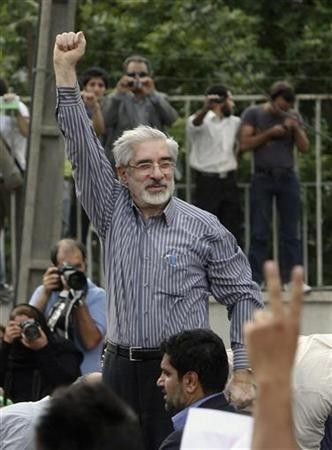Remembering Reform: Iranian Opposition Figure Mousavi Back To House Arrest

Mir Hossein Mousavi, arguably Iran's most prominent opposition figure, has returned to house arrest after undergoing a brief round of heart examinations at a Tehran hospital.
A Mousavi representative told euronews that the former politician was admitted to a medical facility on Thursday "because of clogging of the heart arteries," adding that special caution was undertaken to prevent the leaking of any extra information to the public.
"Security forces are preventing independent doctors from visiting him, and are refusing to release any details about his condition," said the representative.
Mousavi has been hidden away for 18 months, ever since he called on Iranians to participate in the Arab Spring movement by protesting against the Iranian regime. But that was not Mousavi's first anti-establishment activity -- nor was it his most significant.
In his earlier years as a politician, Mousavi was no reformist: He was among the top political figures in the early days of the Islamic Republic. He participated in the 1979 revolution that led to the overthrow of the U.S.-backed Shah Mohammad Reza Pahlavi, and then served as Iran's prime minister for the next eight years.
But after a falling-out with some key figures in the regime, Mousavi retired and devoted the next 20 years of his life to art, architecture, and academia.
When Mousavi finally re-entered the political arena, he was a changed man.
The former prime minster ran as an opposition candidate in the 2009 general election against incumbent President Mahmoud Ahmadinejad. His campaign symbol was a green ribbon, and he ran as a center-left reformist, promising a more open and democratic administration for Iran.
But when Ahmadinejad's victory was announced, those who had voted for Mousavi cried foul. They suspected a rigged election and took to the streets in protest, where they were met with a heavy-handed government clampdown. Dozens died, and thousands were arrested.
Those failed protests -- known today as the Green Movement in memory of Mousavi's green ribbon -- have since transformed into an undercurrent of dissent that still presents a dormant threat to the theocratic leaders of the Iranian regime.
Mousavi's brief re-emergence in the news cycle is a reminder that, although the onetime reformist is rarely heard from anymore, he is still present within Iranian borders. Still present, too, are the millions of Iranians -- most of them youths -- who harbor quiet antipathy toward the country's oppressive regime.
© Copyright IBTimes 2024. All rights reserved.






















